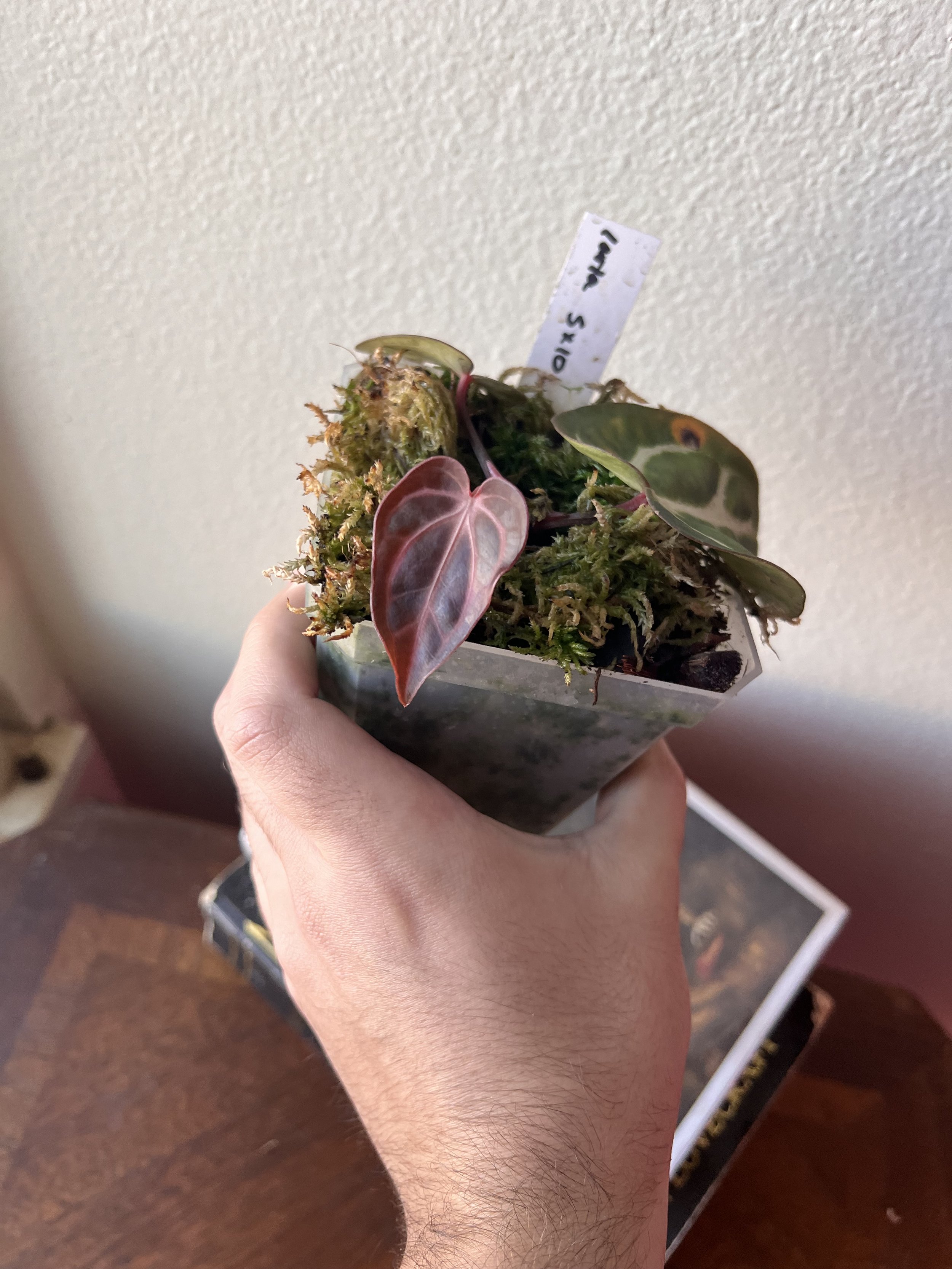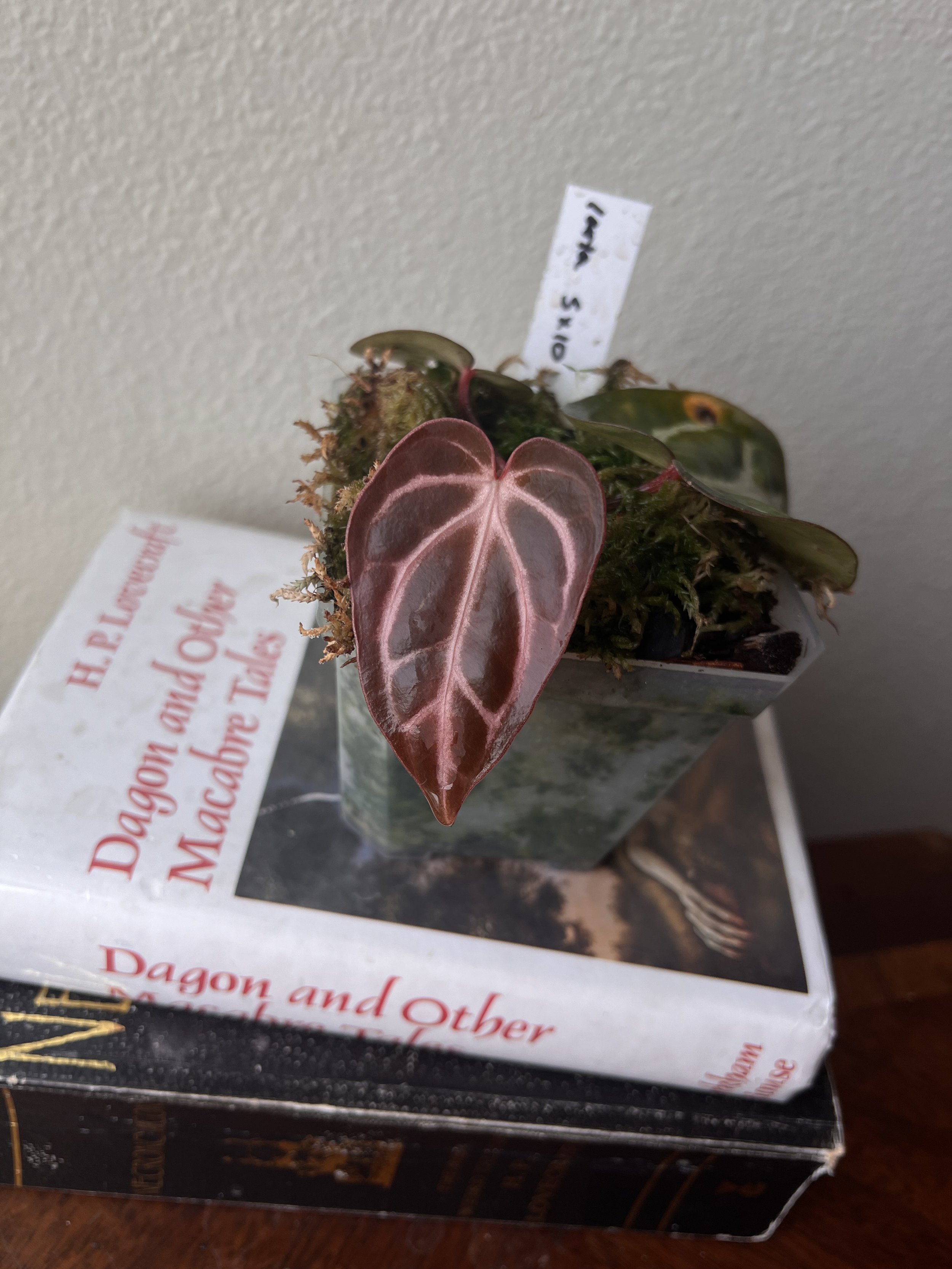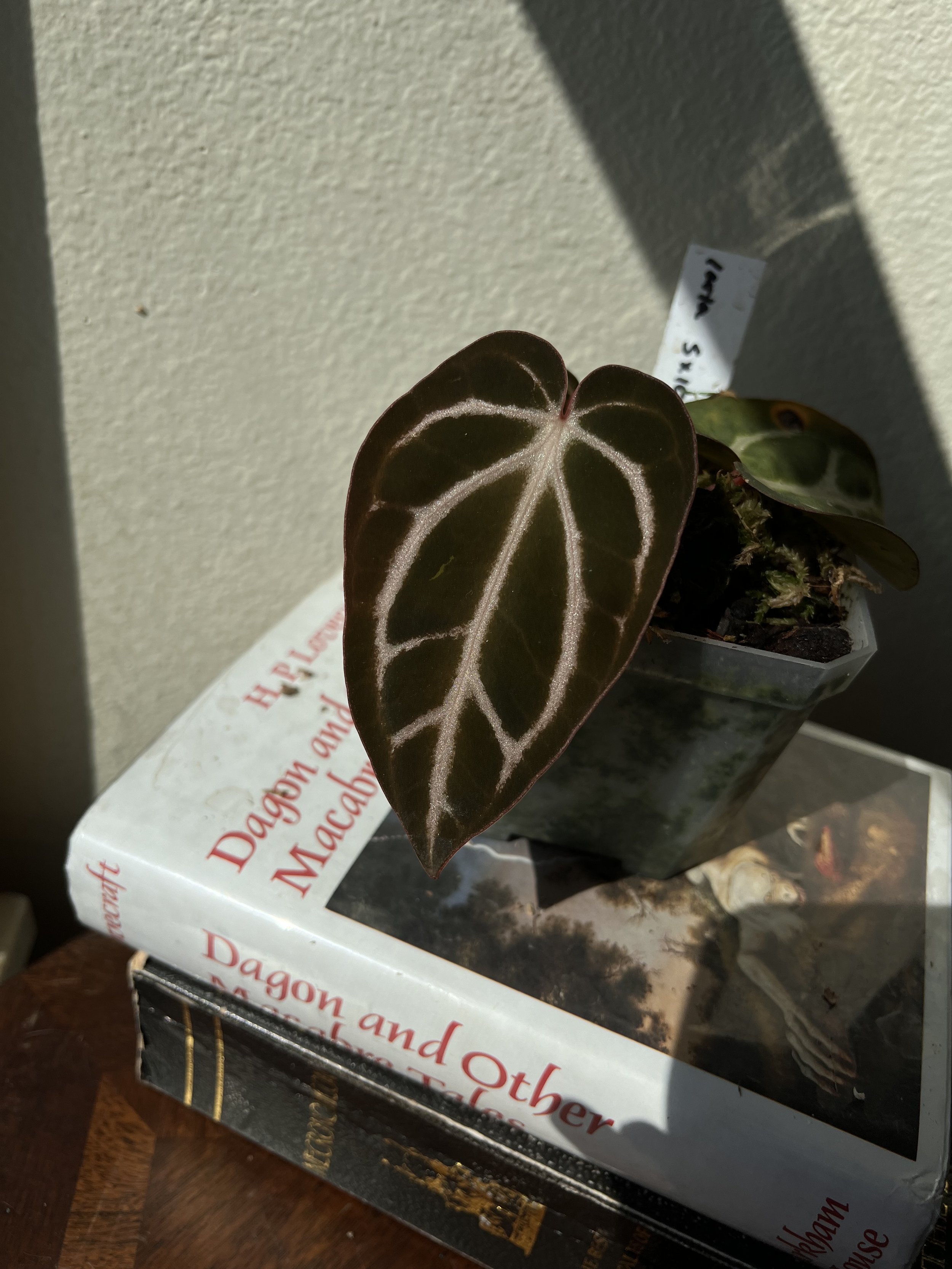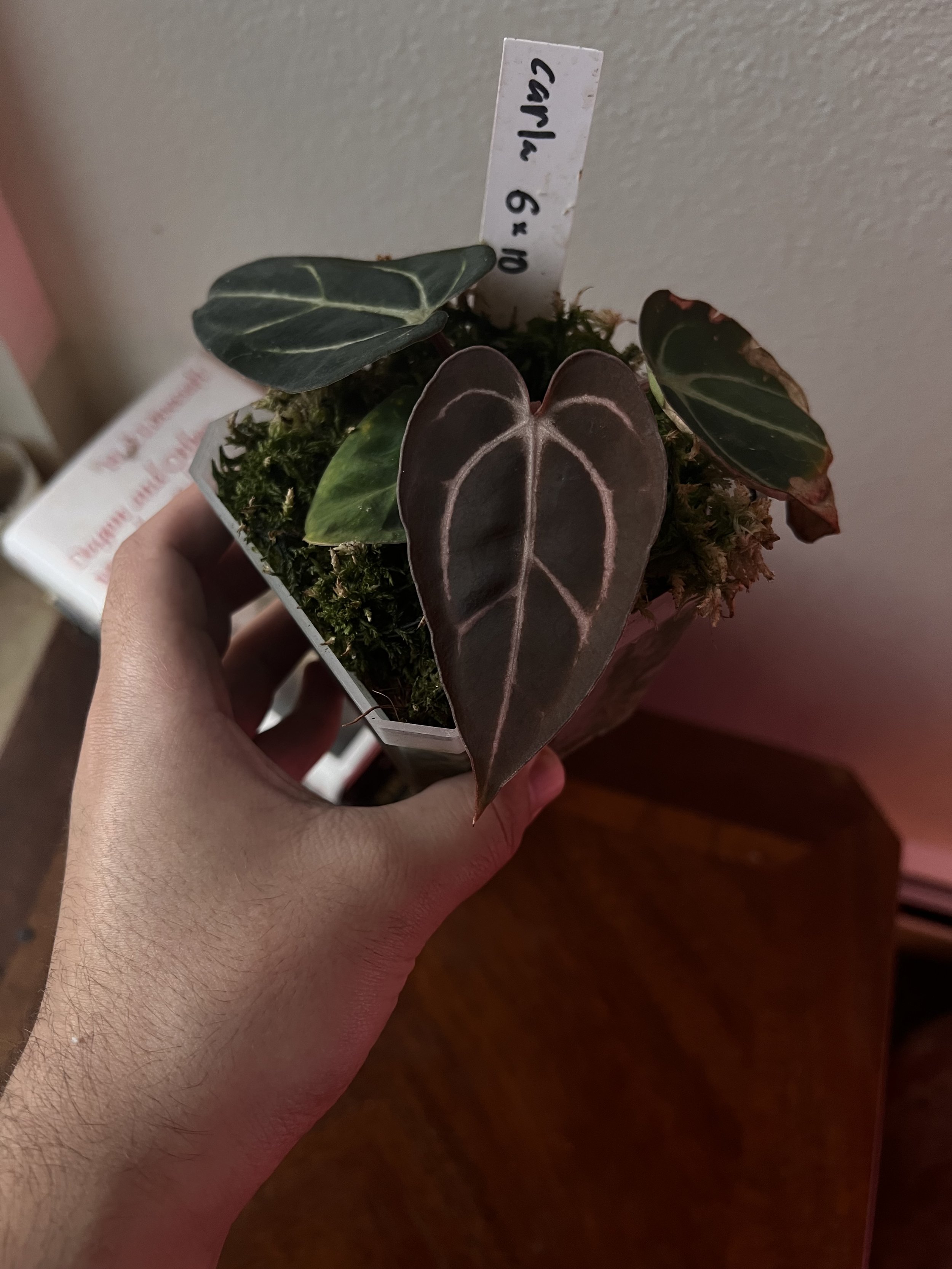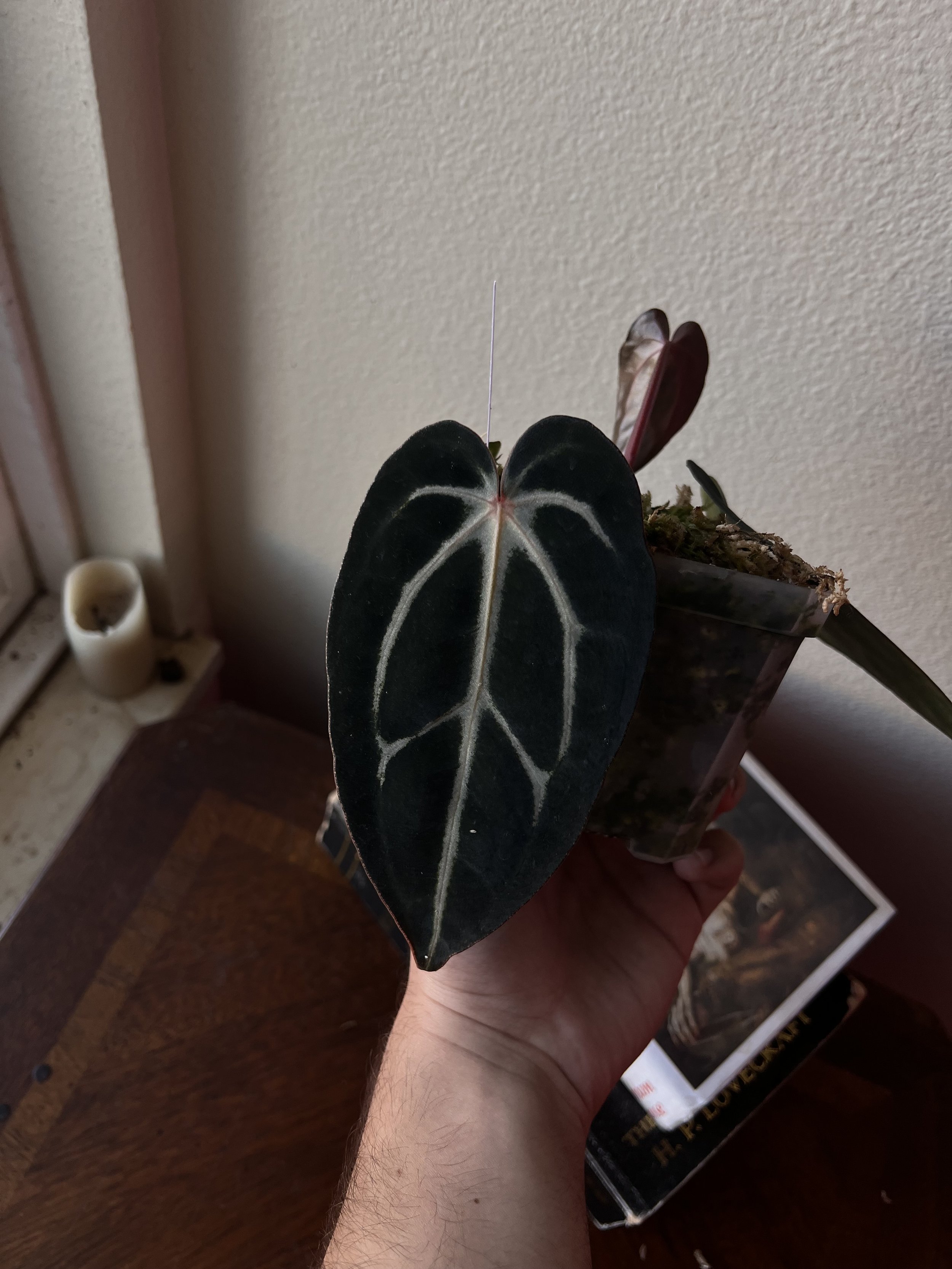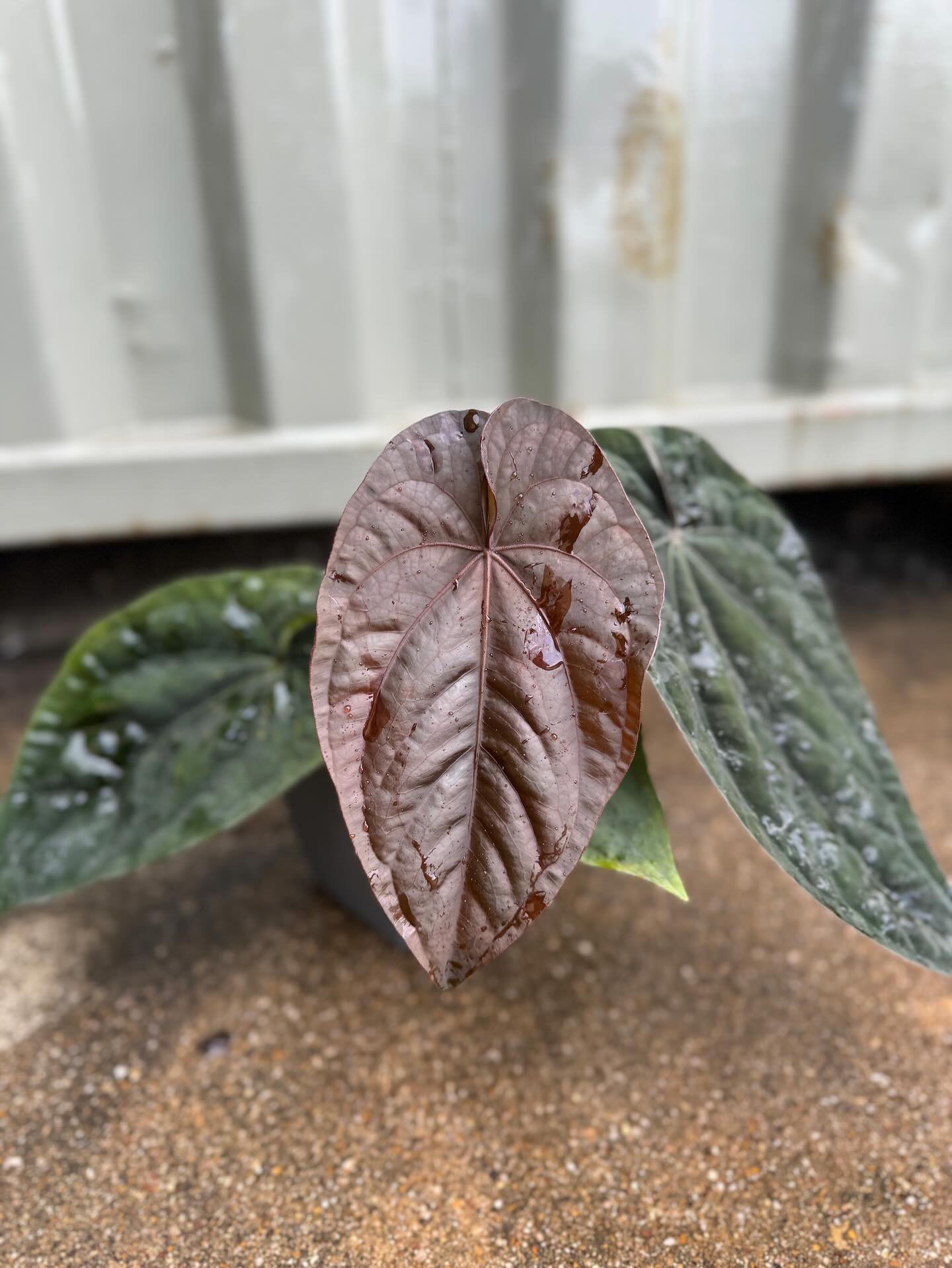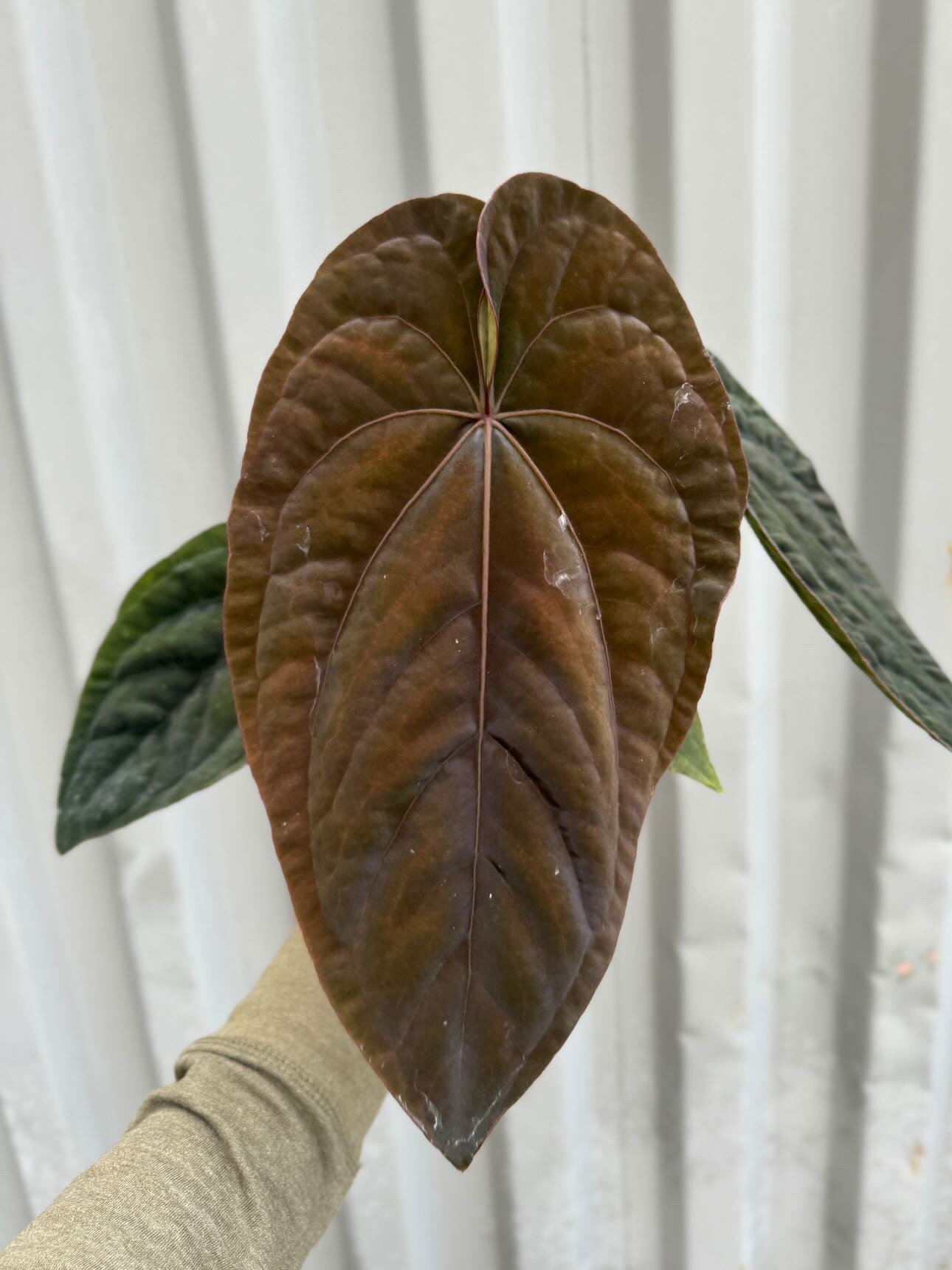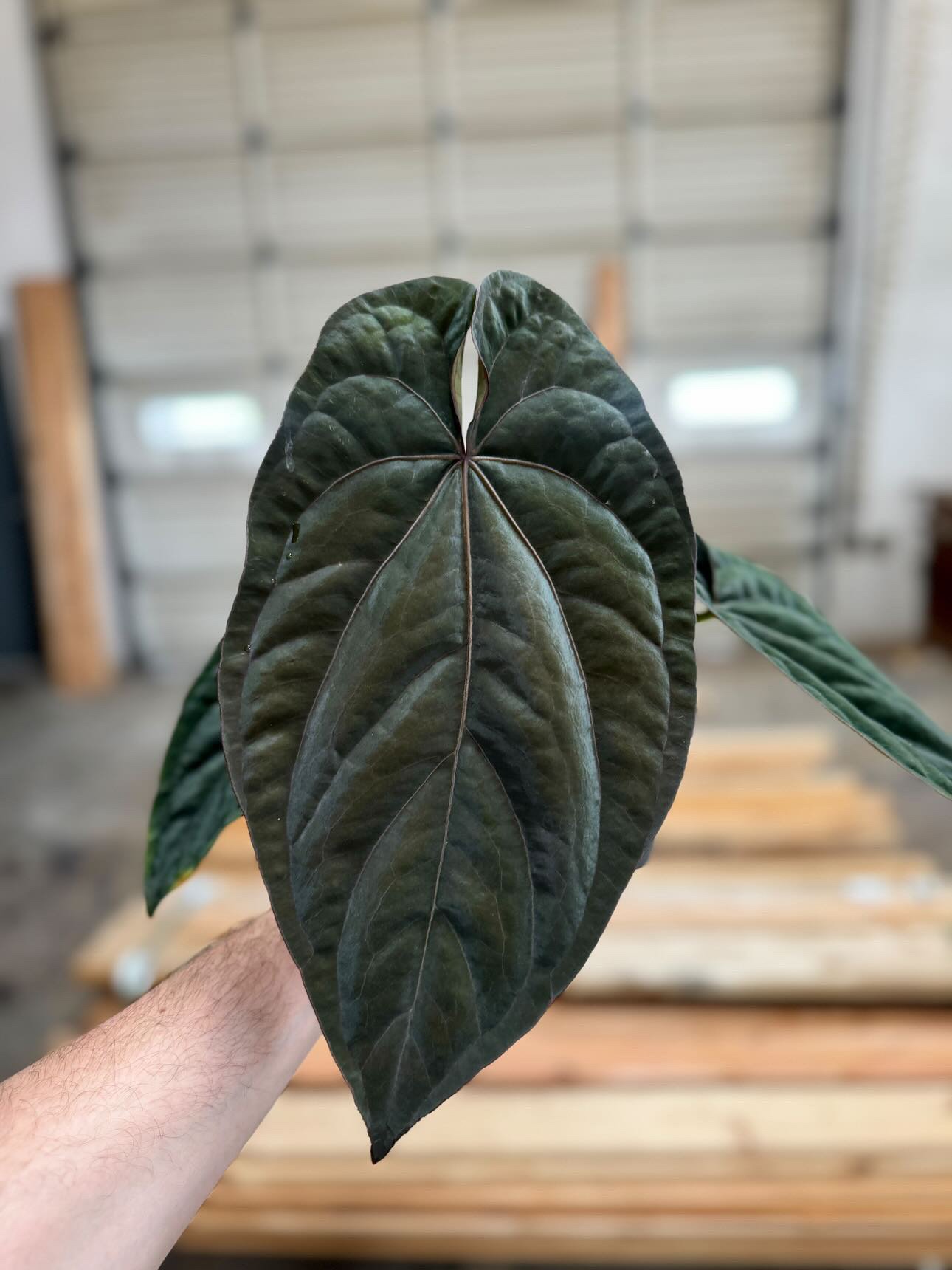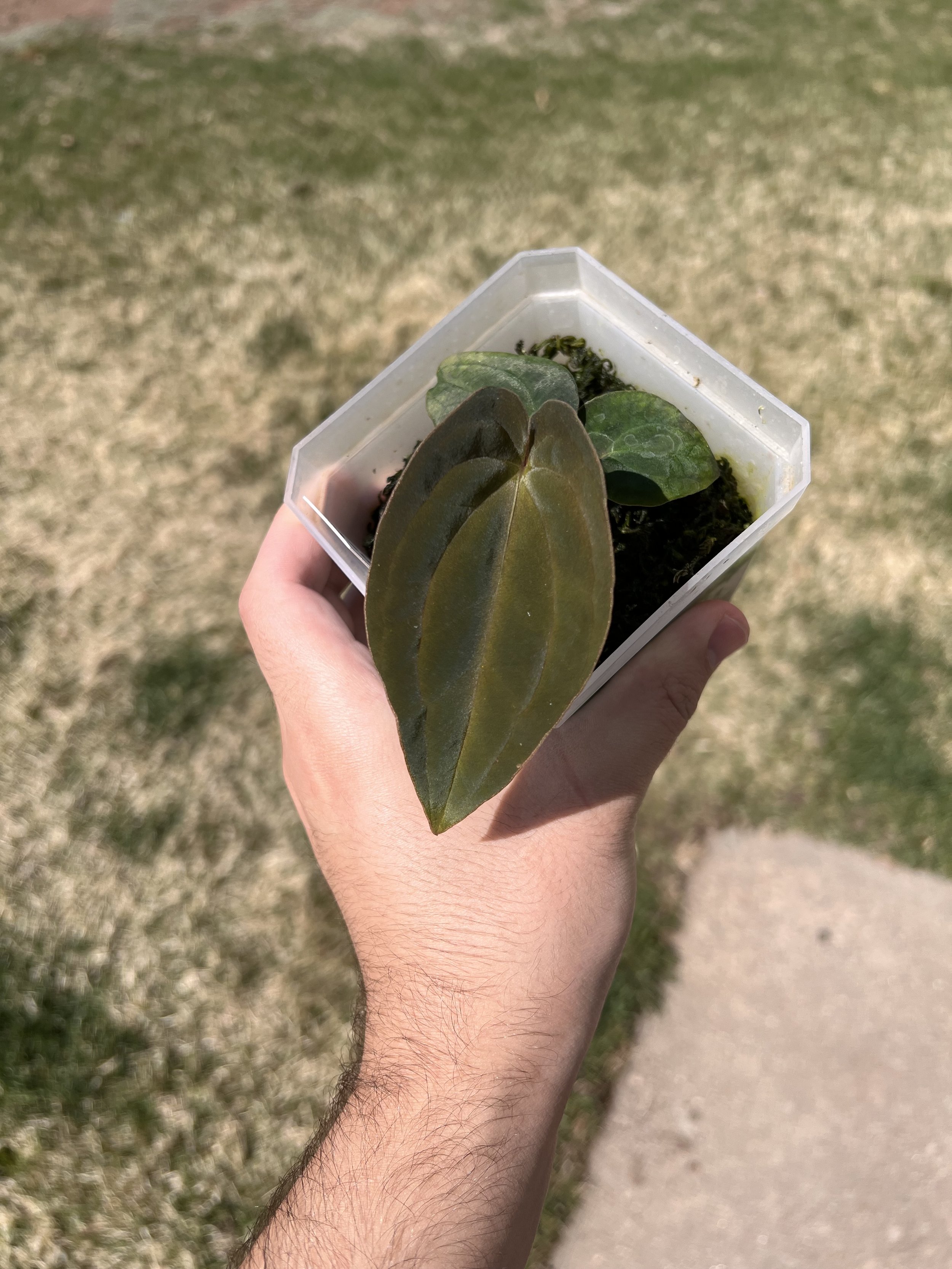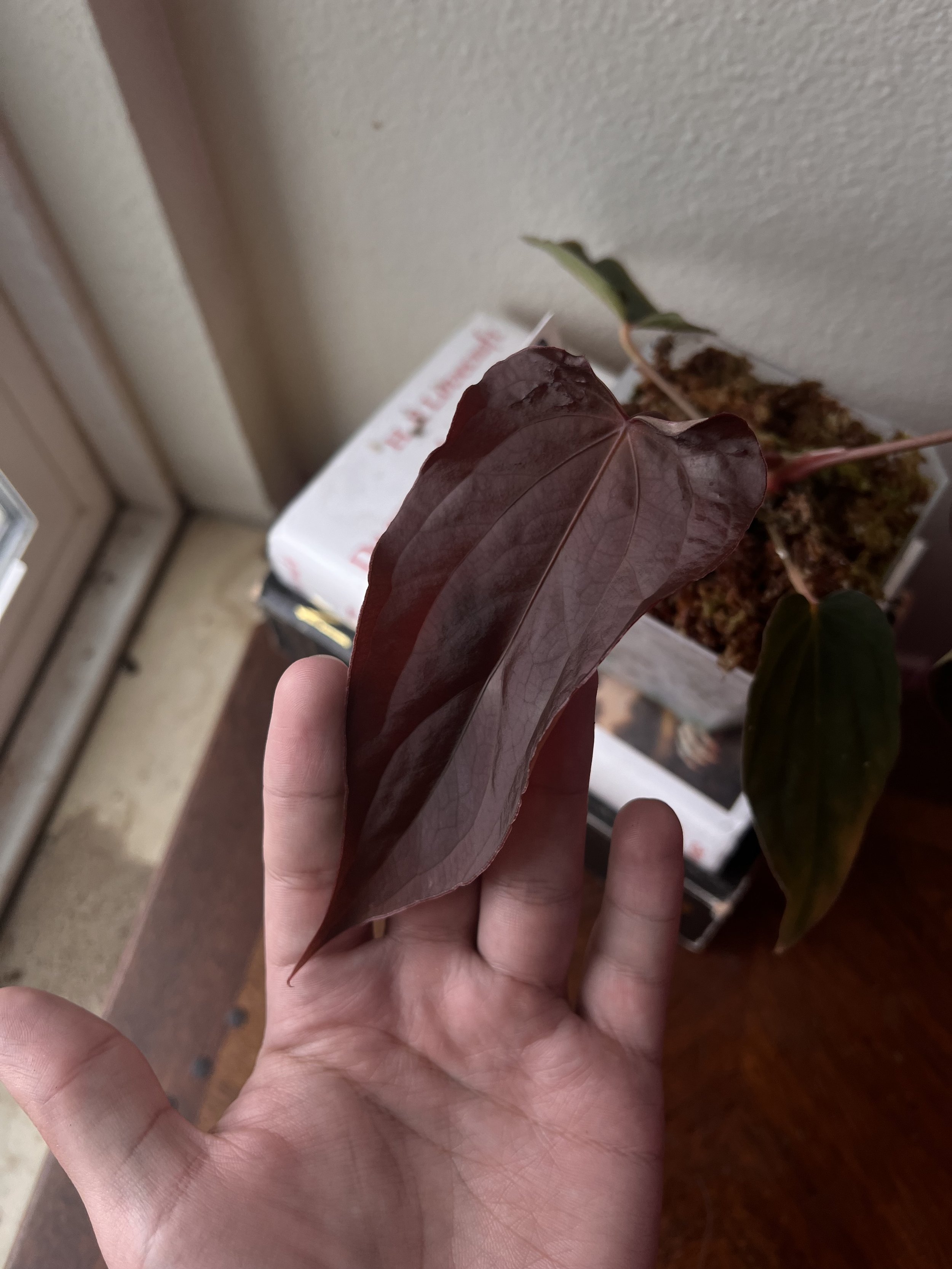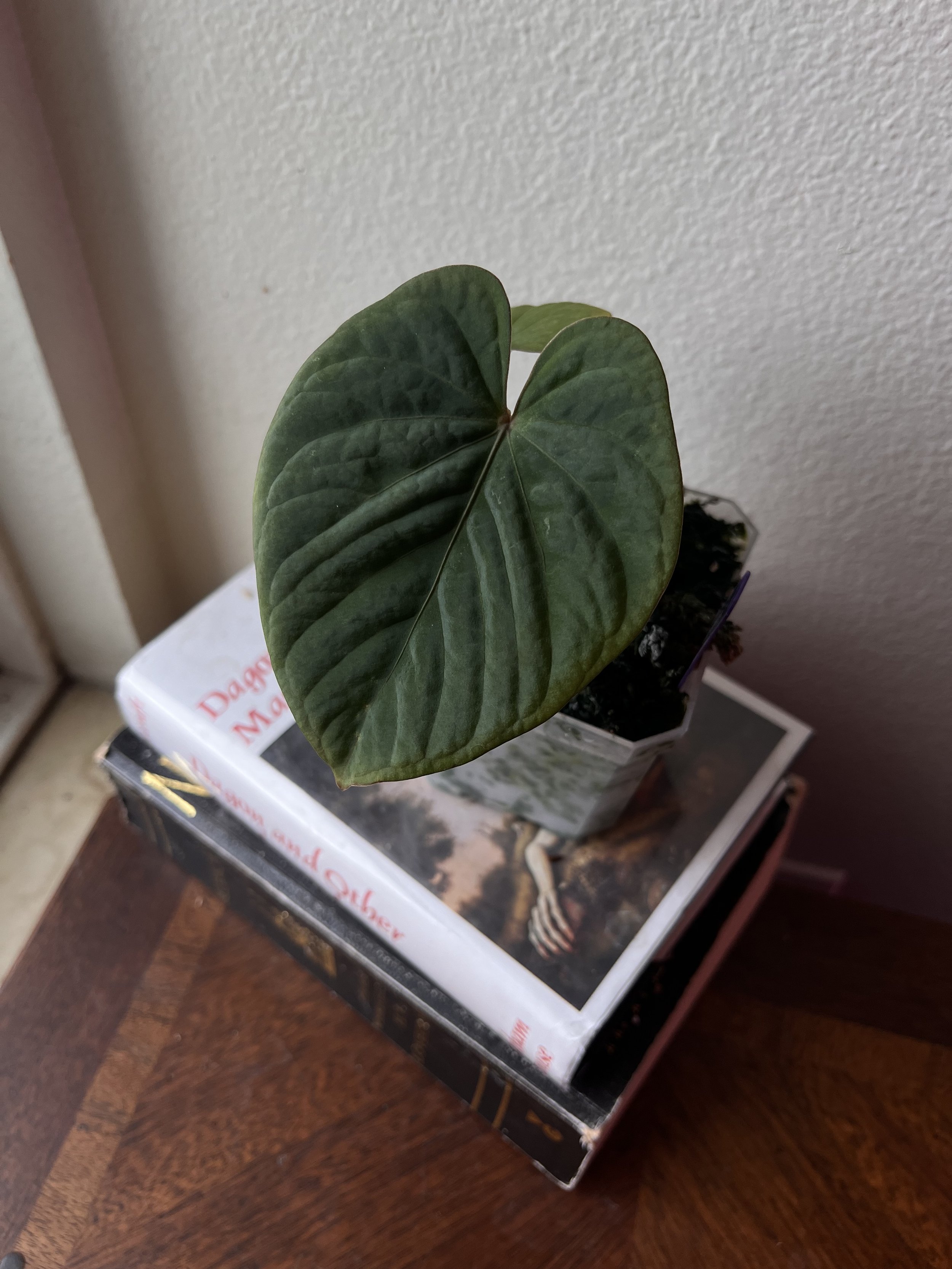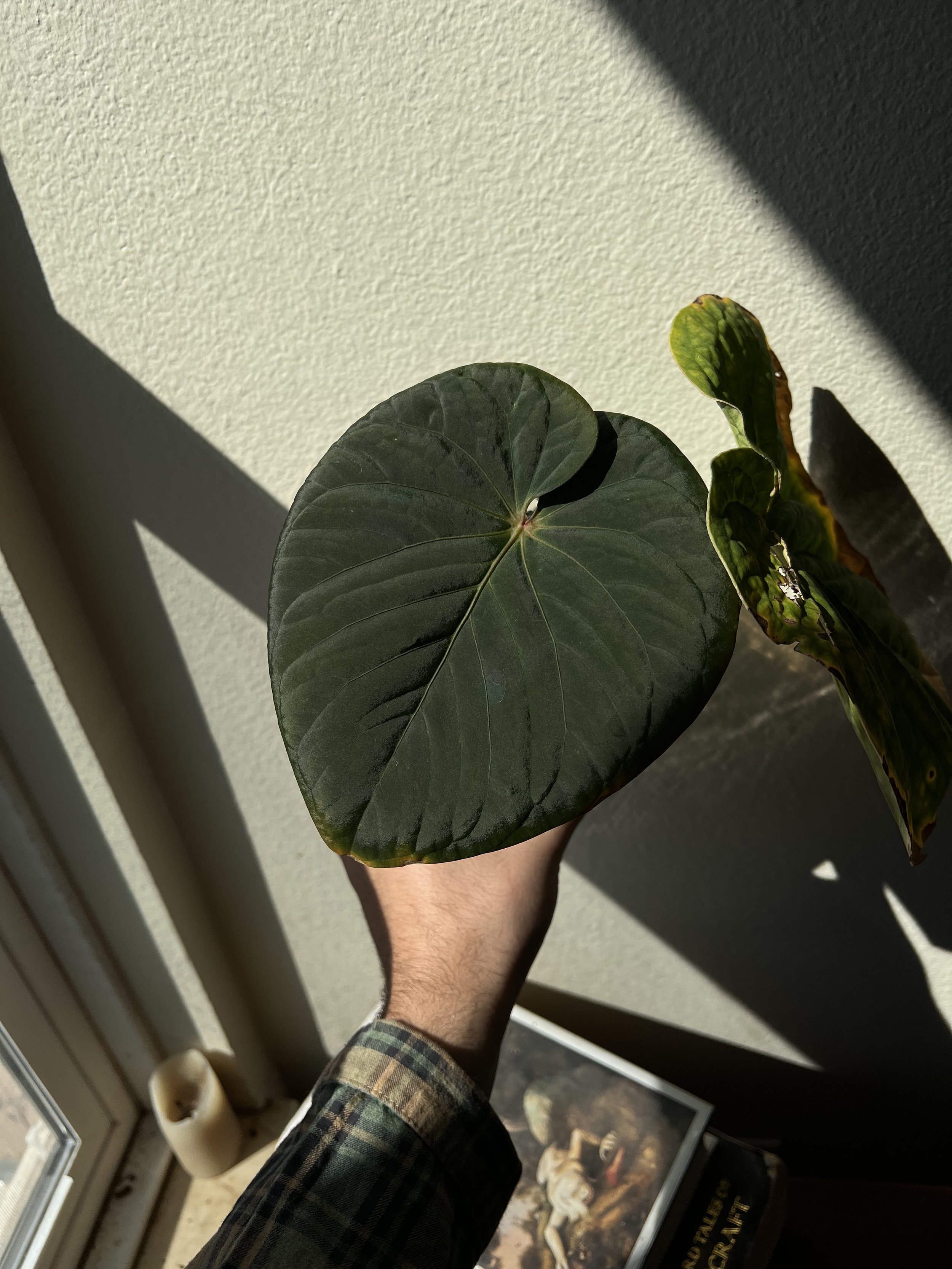A beginners guide to Anthuriums
Purpose
The purpose of this article is to help you understand some of the cool Anthurium in the houseplant hobby. While this will not be a comprehensive guide on Anthuriums, the goal is to help you learn about the various types of Anthurium out there and why this species is so amazing
What are Anthurium?
The word Anthurium is derived from the two Greek words ‘Oura’ and ‘Anthros’, which means tail flower. This is a nod to the inflorescence (flower) Anthurium produce. Anthurium belong to the Arum (Araceae) family which are known to be epiphytic plants that typically are found to grow on other plants or surfaces! Because of that, they pull lots of their moisture from the air, rain, water, or debris around it. Anthurium are shade loving plants that love humidity like many of their native environments.
Where do they originate?
Anthurium are native to tropical forests in Central and South America as well as the Caribbean. While I will not go into great detail about their origins and the full history of cultivation since the introduction in the 1800s; Anthurium have been of interest for their beautiful flowers for a long time.
This interest has seen a major resurgence over the last couple decades, especially since 2020 when the houseplant hobby boomed. Present day, there are many well known breeders of houseplants and specifically Anthurium which will be discussed further in this article.
Lets Talk about types
〰️
Lets Talk about types 〰️
So, you have a basic idea on how long Anthurium have existed, now what?
In this section of the article, we will discuss the various types of species of Anthurium and why you should get Every. Single. One.
Below I am going to outline just a few of the types of Anthurium you have probably heard about. If you feel confused about the abbreviations and numbers, these delineations will be explained as well! You are well on your way to having an understanding of this species of houseplants. This section will not go into the historical detail about each type but will give you an idea of how each varies in characteristics and some food for thought for your next plant purchase.
Family photo of some of my favorite Carlas in my collection :)
Anthurium Carlablackiae
Anthurium carlablackiae, also commonly known as Carlas have been a quickly growing love and argeuably one of the most popular types of Anthurium within the community and greater houseplant hobby. This is also a personal favorite of mine as well since they are so pretty in person.
Carlas are known for their incredibly dark foliage and veining which stand in contrast to the overall darkness of the leaves. In the picture, you can see how a lot of Carlas differ from one to the next, which is something I have always loved about Anthurium, the diversity of each plant.
In the article, "Ra" stands for Rory Antolak, a known breeder of great Anthurium. The number after "Ra" refers to a specific plant, not its generation. This means any cross made with a number following the RA initials, is from a specific parent. You might also see "PM" for Paul Marcellini or "SC"/”OG” for Scott Cohen, who are also popular Anthurium breeders that have a similar system.
It was always the emerging leaves for me…
Below is a great example of why I love this type of Anthurium so much, the emergents (new leaf). While each plant in this species can differ, below you can see how colorful Carla emergents are as they expand. Typically showing off a range of red colors before hardening off to a nice dark green. The plant below is a Carla, specifically a really cool cross made a couple years ago using A. Carlablackiae Ra 5 as the seed parent and A. Carlablackiae Ra 10 as the pollen donor.
Some of my favorite Carlas I grow
Anthurium Dressleri
Another type of Anthurium you may have heard about is Anthurium Dressleri. This species of Anthurium is known for its unbelievably dark foliage and has gained lots of well deserved attention in recent years. Admittedly this is a species I certainly need more of because I do not have very many of them. However, notable types of Anthurium Dressleri you may have heard of could be Windy Dress, NSE Dress, and Rg Dress, among others. As you can see there are quite a few types of this species but I will discuss a few of the most popular and accessible ones.
Windy Dress
〰️
Windy Dress 〰️
Good old Windy is one of my favorite types of Dress, while I do not confidently know its full history, I do know this originally came from Windy Aubrey. Windy is a lovely botanist who has grown some exceptional Anthurium. From my understanding as well, the Windy Dress is an RG Dress derivative that are grown in the community outside of her care are all plants that came from her self pollenating her Dress. These have some of the most delicious looking emergents that remind me of chocolate like the one pictured.
Windy Dress are a lesser commonly available type of Dress and can be a bit pricey at times, however it is certainly worth the cost when it comes to this type of Dressleri.
NSE Dress
〰️
NSE Dress 〰️
Another fun type of Dress is the NSE Dress which is also an RG Dress derivative. This Dress came from Enid Offoltner at NSE Tropicals and has not let many down. This Dress tends to be one of the more affordable options when it comes to Dressleri but that should not be a reflection on this plants quality. NSE Dress in my experience have been quite bullate (bumpy) in texture and very compact bushy growers. And while these have been slower to grow in my care, they certainly are a great option.
I am not sure what it is about Dress, and specifically the NSE version but I am obsessed with them. I love the oval shaped foliage with NSE Dress in particular. In general, this species is not as difficult as people say they are either, in my experience ensuring the soil mix does not go bone dry is what has worked best for me.
Make it stand out
Alex Pizette’s NSE Dress ‘Oliver’. Purchased from Cathartic Plants on Instagram
RG Dress
〰️
RG Dress 〰️
Spot my RG F2! (as you can see at least my live moss is growing well)
If you have heard of RG dress, I don’t think I really need to try and sell you on these. If you haven’t, RG stands for ‘Rio Guanche’, a specific location these are native to. RG dress have been crossed and carefully cultivated for some time now, most notably by Jay V. and now current active growers in the community like Grant Abadel have some fantastic crosses with them available.
You will likely see things like RG F1, F2, even F3; these delineations if you aren’t familiar with, indicate the generation of the plant. A quick crash course here - If I took two RG dress from nature and put the pollen from one onto the other, I would have an F1 generation of RG Dress. Now if I took two specific plants from that F1 generation and crossed them, boom! now you have F2s. I think you get the picture here. . .
RG Dress are hands down one of my favorite Dress types because of their incredibly dark foliage, lovely bunny ears that at times can overlap in unique ways, among a dozen other reasons but I am trying not to seem biased (which I think I am doing a poor job at).
Anyways, here are some pictures to ogle at. These pictures are from my friend Alex Pizette (which you need to follow, like yesterday), who obviously can grow RG Dress better than me.
Anthurium Antolakii, formerly known as Black Velvet Eastern Panama Aka BVEP
Anthurium Antolakii, is hands down one of my favorite Anthurium species. This type of Anthurium is truly one of the most aesthetically pleasing plants in my very subjective opinion due to its incredibly dark pillowy foliage, and highlighter veining. This species of Anthurium was formerly known as BVEP, aka Black Velvet Eastern Panama and has recently been described and is now know by the name Anthurium Antolakii.
In my experience, these have been easy growers that once acclimated, grow at a nice pace. Like most Anthurium, they do not like their environment changed often, so if when you first get one and it does not look Instagram worthy, give it some time to grow and settle. I mean, would you enjoy it if you kept moving from one house to another with all new furniture just as you started to get comfortable? Some of my absolute favorite Anthurium Antolakii types are Antolakii ‘Sun’/’Sunrise’, Antolakii Ra9, and Antolakii Ra1. below, in the order shown are my Anthurium Antolakii Ra9, ‘Sun’, and Ra1 self.
Anthurium Kunayalense
I am starting to run out of space here and I hope I haven’t lost you yet but here we will talk a bit about Anthurium Kunayalense, commonly called Kunas or Kunayas. And these are a personal favorite of mine.
If you know much about this species, you have probably heard they are difficult to keep happy, finicky, scary even. However I am here to tell you DO NOT PANIC. As I previously said, Anthurium do not like having their conditions changed frequently, and that is especially the case here. In nature, Kunayalense grow along river edges with ample access to water. The way I have translated that to my care is by ensuring they are always humid and never really dry out completely. Doing this has given me some solid results even with some of the more difficult to grow Kunas.
My favorite Kuna I have grown is this PM5 pictured, acquired from Grant Abadel. One of my favorite characteristics of this species is how round and pillowy they are. Kunas tend to not be as dark as other species like Antolakii or Carlablackiae but do not let that stop you from appreciating the traits they do show off.
Now what?
First of all, thank you for reading this if you made it here. This article was a fun way for me to show some of my favorite Anthurium and talk about them. Your support here is what keeps this hobby alive and thriving, so by even being here you are showing your love.
At this point, I hope the article has helped give you some ideas on only the surface of Anthurium species out there and it helps guide you on your next pickup! Thank you again for your time and support!
Me and my Carla <3
made with love from Nathan Randall, at Green on Green.




